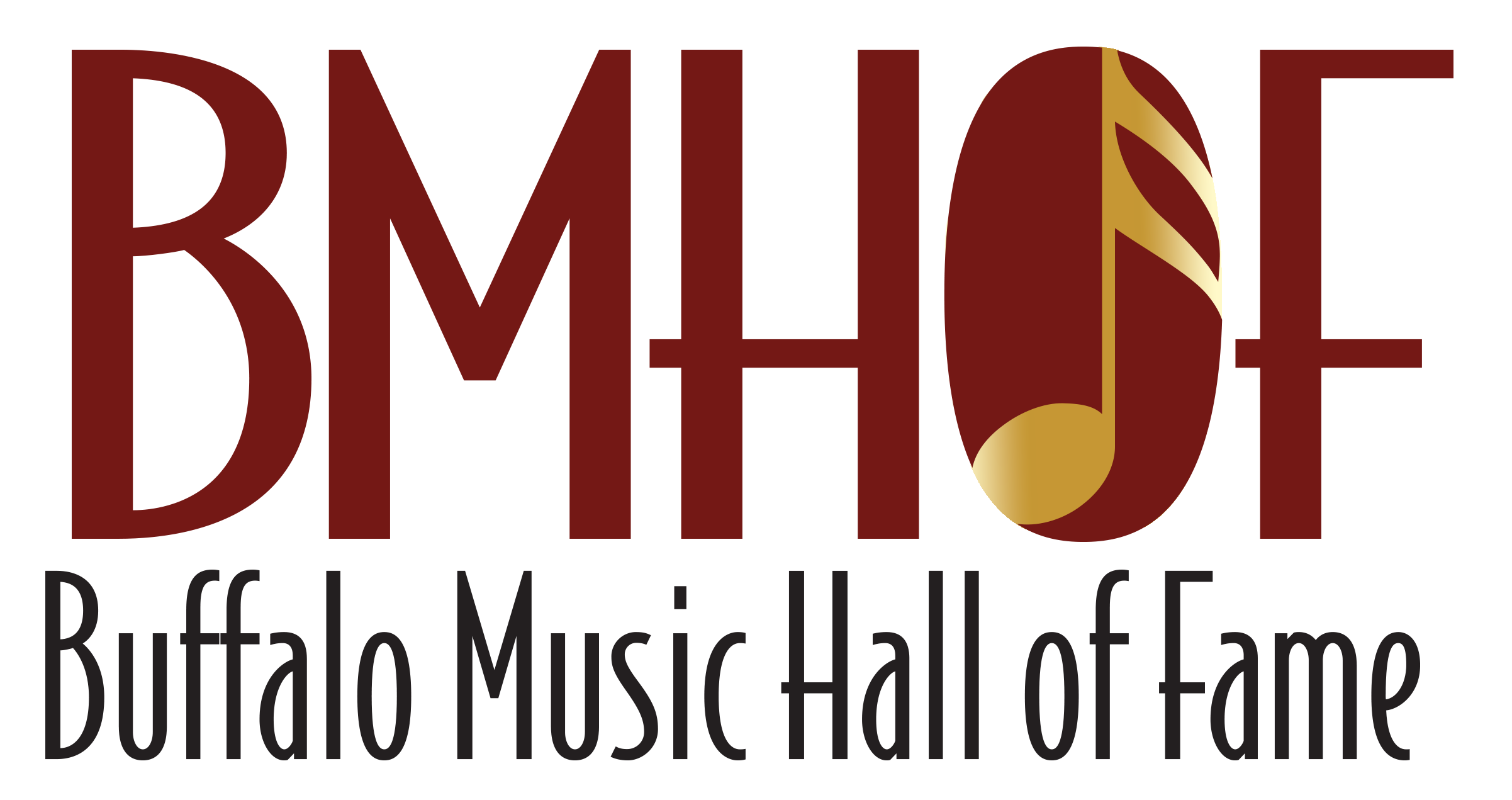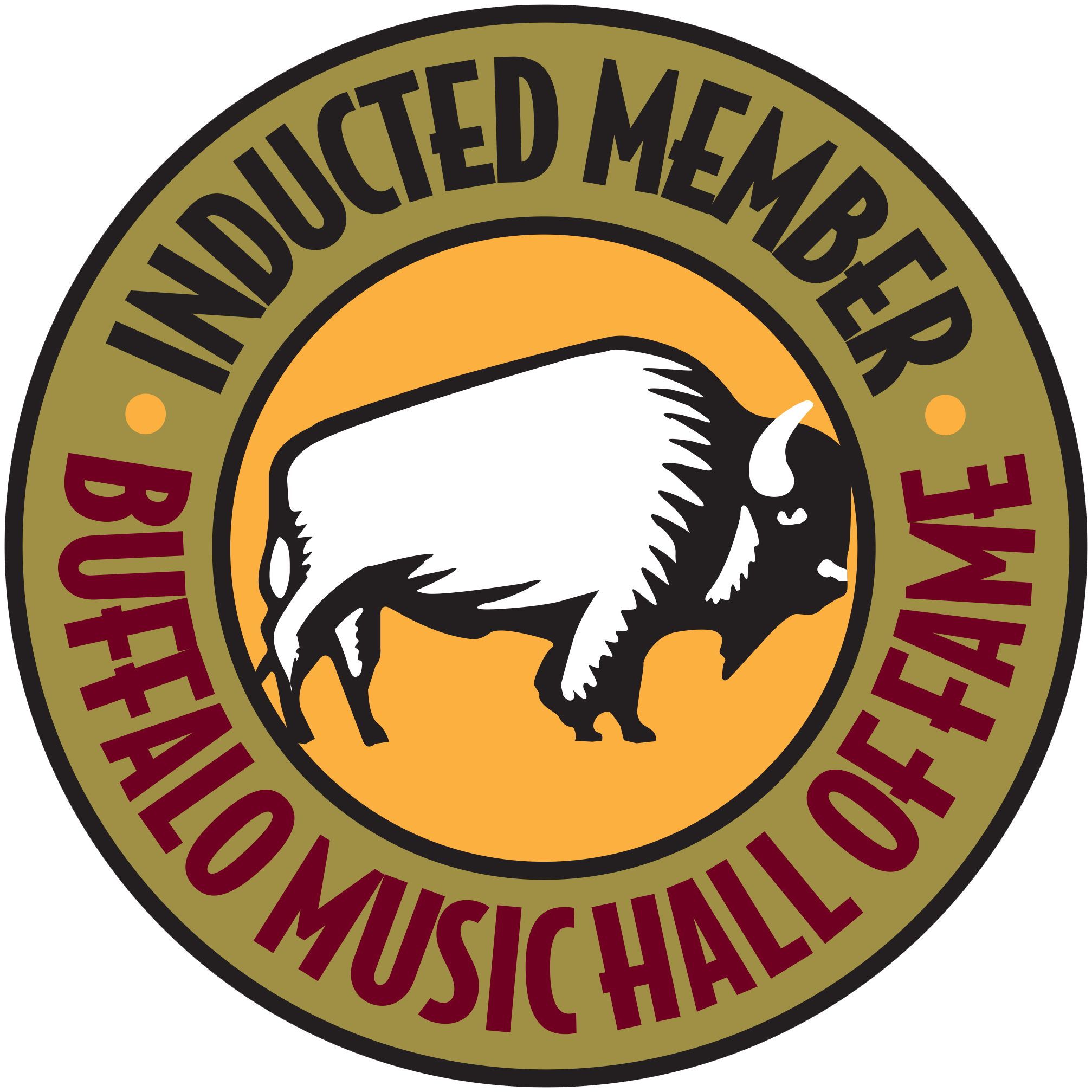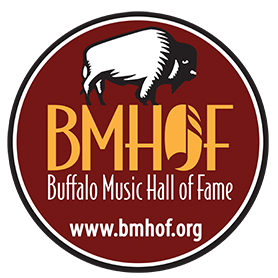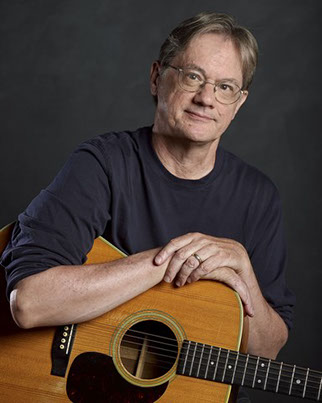





DAVID MYLES MEINZER - BMHOF CLASS OF 2016

The year was 1966 when a band of young upstarts from the Town of Tonawanda streaked across the musical landscape. They were called the Panthers, and they only played one gig. It was for David Myles Meinzer’s sister’s birthday party, and the young performers were miming along to Beatles records on homemade mock instruments.
“We took chunks of plywood and with a bandsaw cut out guitars, and used hubcaps from model cars for knobs, and cut out tin cans to make pickups, and strung them with fishing line so it looked like they had strings, and then set up cardboard boxes in the garage for amps,” Meinzer explained. “And we brought out a record player and made up a set list of records and we played along with them. We had the Ventures’ instrumental version of ‘Secret Agent Man,’ so we were able to sing along with that one.”
It was the first step of Meinzer’s trip to the Buffalo Music Hall of Fame, a journey that has seen him become a key performer, songwriter, graphic artist and journalist in the city’s new wave and Americana scenes.
Meinzer described the excitement of 1966 in particular, when Top 40 radio offered a dizzying array of hits.
The catalyst was when our family grew and my Dad had the roof raised to add more bedrooms. Which meant that my brother and I moved to the basement, where we had a big room with a radio,” Meinzer said. “I decided WYSL was my station. I just happened into listening in January of 1966, which was just the greatest year ever. You had the Beatles, the Stones, and Bob Dylan having hits then—‘Rainy Day Women’ and ‘I Want You.’ It was just a big door to everything.
‘Wild Thing,’ ‘They’re Coming to Take Me Away’— it ran the whole gamut. Frank and Nancy Sinatra. Top 40 was so open in those days. ‘The Ballad of the Green Beret.’ Later that year, the Monkees TV show came on the air. All that stuff just seemed like so much fun.”
“One of the first 45s I bought was ‘Did You Ever Have to Make Up Your Mind’ by the Lovin’ Spoonful. And one of the things about it was that sound that you couldn’t really pin down. Even now, it’s like no one can really agree on what it is. Is it the guitar being played through a Leslie speaker? But there’s also an electric piano in it. It just became a mystery. Another one was ‘The Pied Piper,’ by Crispian St. Peters. And that had a very prominent acoustic rhythm guitar. I remember listening to that and thinking: ‘Now I know what rhythm guitar is. That’s rhythm guitar!’ Each record was a learning experience of some sort.”
By the end of 1966, Meinzer knew he wanted a guitar, and for Christmas that year a no-name acoustic from Sears showed up under the tree. The following spring he graduated from eighth grade, got access to his savings account, and was able to spend $65 on an electric guitar and a little amplifier. That’s when he embarked on the time-honored routine of so many self-taught musicians by playing along with all the great records that were being released at the time.
“In high school, it was just jam sessions,” Meinzer recalled. It wasn’t until college at Buffalo State that he began play in a more organized band. “A friend of mine, Stu Shapiro, said he was putting together a jug band for college credit and asked if I wanted to be in it,” he remembers. “There were so many people involved that we wound up splitting into two groups. Stu went with the jug band and Carl Thiel and I took off with the other group and formed a sort of country rock band, where I was able to get the Gram Parsons thing going because Carl was into that, too.”
Meinzer was also a writer and graphic artist for Shakin’ Street Gazette, the legendary music fanzine that came out of Buffalo State in the early ‘70s.
After a semester of practice, the band -- known as Wheels -- performed at the Fireside Lounge at Buffalo State to gain their single hour of college credit. Later Shapiro captured it on video for one of his projects, called “Buffalo Graffiti”—a sort of Don Kirshner show. The band consisted of future original music scene notables Meinzer, Kathy Moriarity, Bob Kozak and Dave Zwink, plus Tom Kaminski, and they did a song at the top and a song at the end of each of the two half hour programs. They performed the song “Wheels,” along with “Love Hurts,” “Take it Easy,” and “Silver Wings.”
After college, Meinzer faced the dilemma of finding venues that were receptive to the left-of-center, fringe country that he was into. Then, in 1977, Elvis Costello played at Buffalo State. Meinzer said of Costello’s debut release “My Aim Is True”: “That whole album, the way it was arranged, the way the songs were written—they just inspired me. I felt like ‘this, I could do.’ It hearkened back to that ‘60s stuff that I loved, and still had a hint of country, but it was rocking.” There was still no place to play, but there was the artistic motive to write songs.
Then came McVan’s. Suddenly, bands like the Jumpers and Electroman started playing original Buffalo punk and building their own audience. It was the motivation for Meinzer to form Davy and the Crocketts with Dave Zwink on drums, Geoff Copp on guitar and Russell Steinberg on bass. They gained the attention of Tommy Calandra and recorded a singles and half the “Lovesick” LP.
Songs like “Turn Your Back” with its jangly power pop sound are testament to Meinzer’s budding ability as a tunesmith and classics of their genre. In fact, his songs can be heard by artists such as the Joelle Labert, the Vores and the numerous groups he has performed with.
Crocodile Tears, the Cobras, the Beatmongers, the Heartbeats, Dry Bones (cassette release), the French Ticklers, and his current group the Outlyers (two CDs) followed over the years, along with projects for his alter ego Nimrod Wildfire (cassette release). He has also released a solo CD under his own name.
He’s also well respected for the graphic design work he’s done for countless Buffalo bands and national acts. An archive focusing largely on his work is at www.bengalconnect.com.
By Buck Quigley